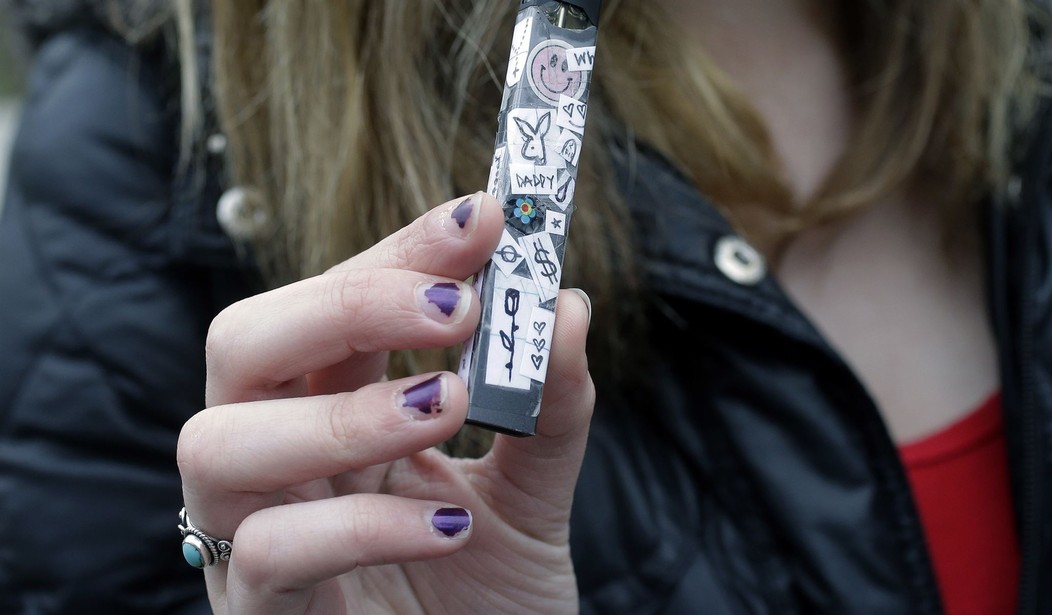While Democratic lawmakers publicly laud the Food and Drug Administration (FDA) for denying more than 1 million applications for vape products, they continue to be frustrated that the FDA is dragging its feet on deciding the fate of some of the more high-profile applications. Now, instead of waiting for the FDA to conclude their review process, some members of Congress have decided to introduce even more vaping-related legislation in a misguided attempt to put a stop to a supposed youth vaping epidemic.
Sen. Richard Blumenthal (D-Conn.) and Rep. Debbie Wasserman Schultz (D-Fla.) recently introduced the Preventing Opportunities for Teen E-Cigarette and Tobacco Addiction (PROTECT) Act. The legislation would earmark federal funding to the Centers for Disease Control and Prevention (CDC) and states to improve “research, education, and outreach” and provide such agencies and “localities with the funds and tools necessary to protect young people from the e-cigarette industry’s manipulative practices.”
It’s overwhelmingly apparent that these Democratic lawmakers didn’t really examine the latest results from the National Youth Tobacco Survey – ironically administered by the CDC. If they had, they would have found that in 2021, only 11.3 percent of high school students and 4.7 percent of middle school students reported using an e-cigarette on at least one occasion in the 30 days prior to the survey. These are significant reductions. Among high school students, youth vaping has decreased by 50 percent since 2019, and by 55.2 percent among middle school students.
It’s also apparent that these lawmakers are relying on deceptive practices by both the FDA and CDC in breaking down youth daily use of e-cigarettes. In their press release, the senator and representative remark that “more than 2 million youth used e-cigarettes in the past year, with 1 in 4 high school students reporting daily use.”
Recommended
This is a gross perversion of the actual data. In 2021, among current high school e-cigarette users (as defined previously), 27.6 percent of the aforementioned 11.3 percent reported daily e-cigarette use. This amounts to only 3.1 percent of all high school students using e-cigarettes daily.
The FDA and CDC are the same agencies that are giving these lawmakers their talking points. In its graph on the results of the annual survey, the FDA conveniently has the bit about 1 in 4 in a font significantly larger than the “among current users.” On September 30, the FDA tweeted that “1 in 4 high school students reported daily use.” There were no mentions that these were among current e-cigarette users.
While the CDC has not been overtly misleading lawmakers and the public like the FDA on the statistical analysis of youth e-cigarette use, one must not forget that this is the agency that pretty much declared a war on all e-cigarettes by purposefully downplaying the role of illicit vapor products in the 2019 spat of vaping-related lung injuries.
As early as August 2019, local and state health departments were noting that vaping products containing tetrahydrocannabinol (THC) were overwhelmingly being cited among patients diagnosed with a vaping-related lung injury. On August 30, 2019, the Wisconsin Department of Health Services reported that 9 out of 10 patients with such lung illnesses reported using THC-containing vapor products. The CDC would go on to downplay the role of THC products and refused to cite any commonly known fake “name brands” of such products. In fact, the agency waited until December 2019 to inform the public (and parents) that “Dank Vapes” a fake THC vape brand, “was the most commonly reported product brand used by patients nationwide.”
In their press release, Sen. Blumenthal stated that e-cigarette manufacturers were “using deceptive marketing tactics.” Rep. Wasserman Schultz claimed that there was a “profit-driven, predatory assault” to addict young Americans. Blumenthal notes that the PROTECT Act “would equip the CDC” with the tools to counteract such wolfish behavior.
Both the FDA and the CDC are currently engaging in the same, if not worse behavior that the lawmakers are purporting to. It’s a shame that these lawmakers would not only repeat the falsities spouted by these egregious taxpayer-funded organizations, but also seek to provide the same agencies more taxpayer funds, including many from adults who have successfully quit smoking by using less harmful e-cigarettes.
Taxpayers shouldn’t be paying additional funding to such organizations that purposefully mislead and confuse the public and lawmakers, by overemphasizing youth vaping, which has continued to decline.
Lindsey Stroud is Director of The Taxpayers Protection Alliance’s Consumer Center.
























Join the conversation as a VIP Member